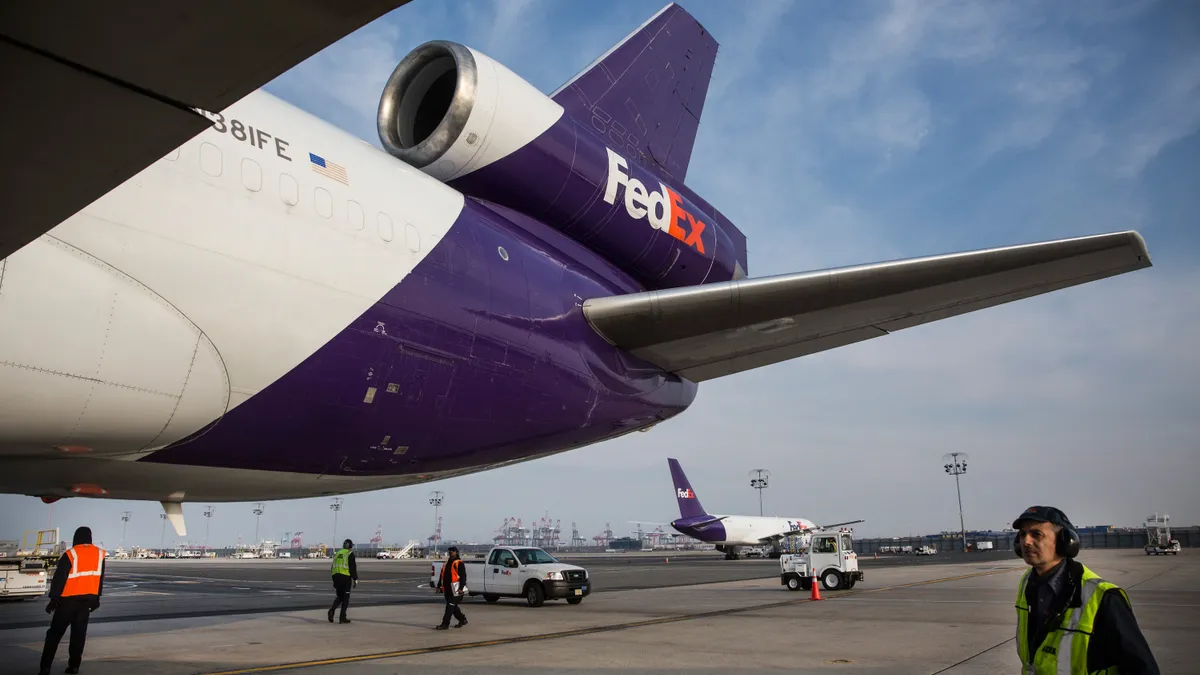Dive Brief:
- The air cargo market is swinging further in favor of shippers as carriers prepare for softening demand, according to a Nov. 6 report from Xeneta.
- In October, global air cargo spot rates dropped for the sixth consecutive month, marking a 3% year-over-year decline to $2.58 per kilogram, per Xeneta. Seasonal contract rates fell even faster in the month, dropping 8% YoY to $2.31 per kilogram.
- While prices dropped, October air cargo volumes grew 4% YoY. However, that wasn't enough to outpace a 5% increase in supply, and peak season growth momentum continued to be "subdued" in the top three global trade lanes, according to the report.
Dive Insight:
Air cargo demand ticked up more than expected in October considering the end of the U.S. de minimis exemption on Aug. 29 and reduced frontloading by shippers following a surge ahead of new tariffs, according to Xeneta. But ongoing trends suggest challenges for airlines and forwarders in the months ahead, Xeneta Chief Airfreight Officer Niall van de Wouw said in the report.
"The announcements by companies about reductions in cost are increasing left and right – and will continue - and we would not be seeing that if the market outlook was more positive," he said.
Van de Wouw flagged a 6% YoY drop in Europe-North America demand in October, a lane focused on general air cargo, as a possible "bellwether for the rest of global trade" underscoring a cooling market. Spot rates on the lane rose 4% YoY, a deceleration from 23% growth seen earlier in the year.
Meanwhile, China-to-U.S. e-commerce shipments declined for the fifth consecutive month in September, with volume falling 34% year over year, per Xeneta. The de minimis exemption was a key driver of shipping activity on that lane.
Amid softening demand, van de Wouw expects further downward pressure on air cargo rates as forwarders compete for volume. While shippers may benefit from lower rates, they likely have bigger concerns in mind, he added.
"I think most shippers would rather have 10% higher freight costs and 10% higher sales than 10% lower freight costs and 10% lower sales," van de Wouw said.













